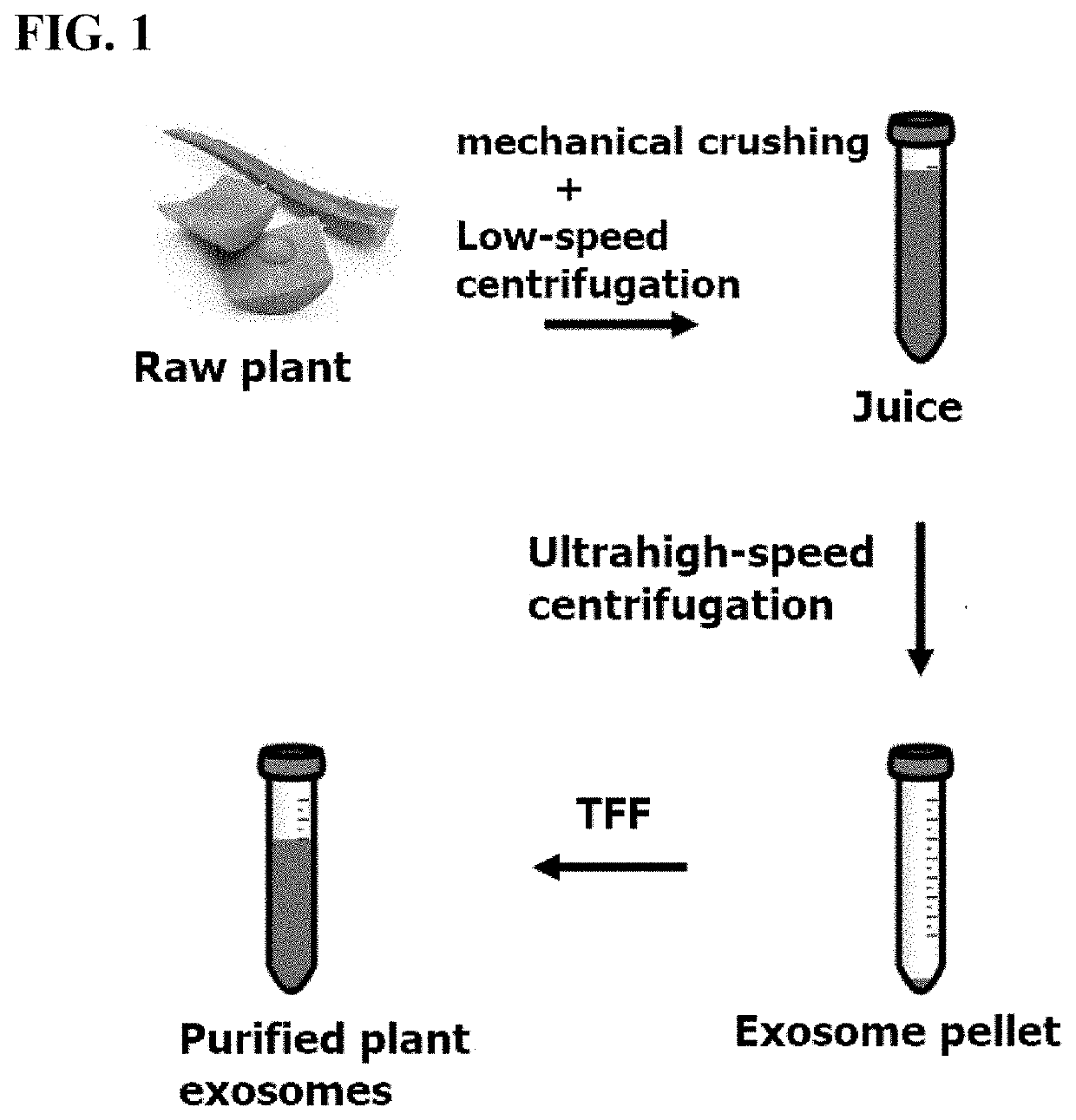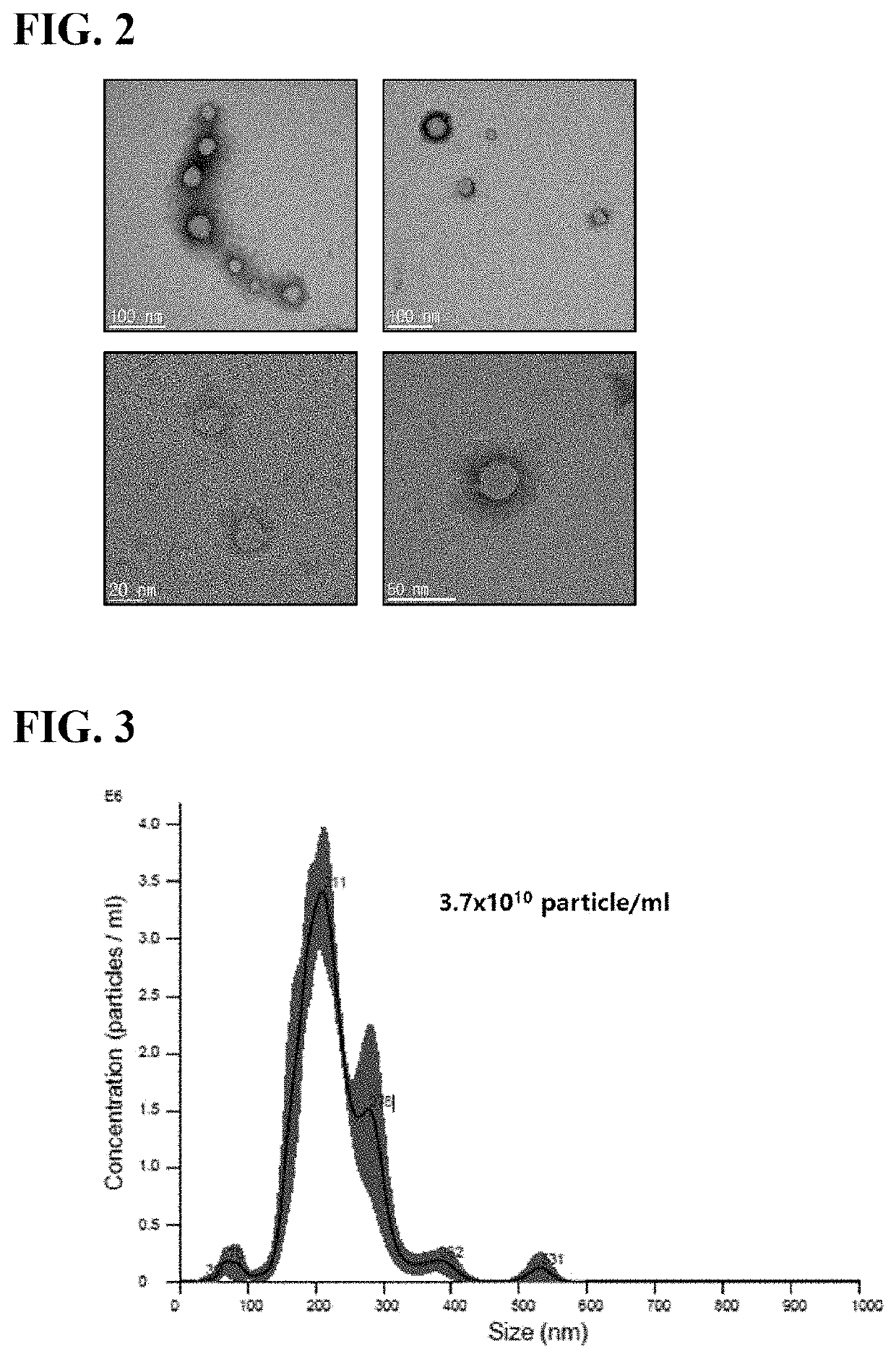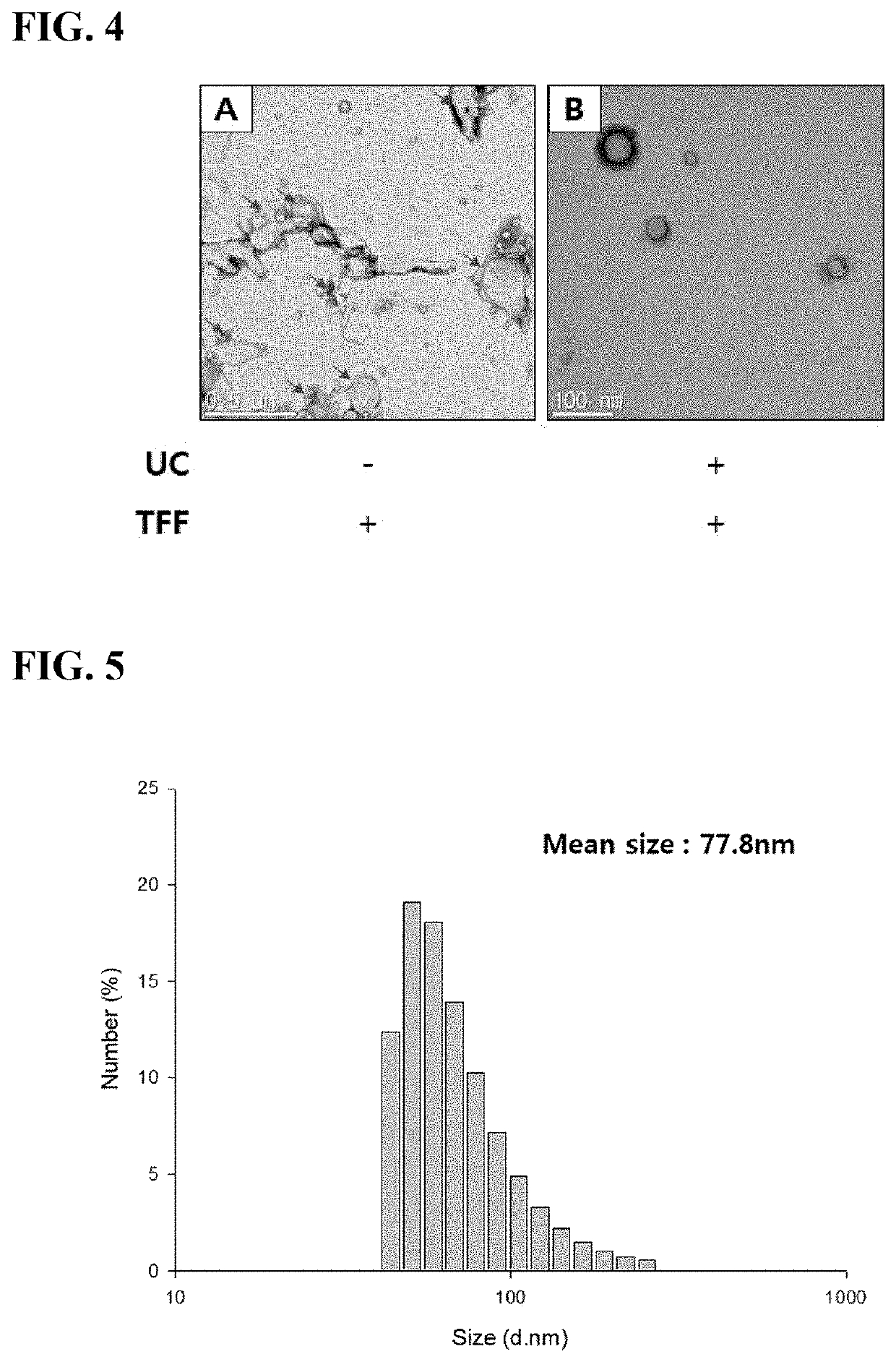Method for mass-producing plant exosomes
a plant exosome and mass-production technology, applied in the field of mass-producing plant exosomes, can solve the problems of limited confirming characteristics, difficult to utilize methods in the production process for commercialization of exosomes, and little is known about proteins related to the relationship of proteins, etc., to achieve high purity, high-purity plant exosomes, and easy process for large-scale production
- Summary
- Abstract
- Description
- Claims
- Application Information
AI Technical Summary
Benefits of technology
Problems solved by technology
Method used
Image
Examples
example 1 (
UC+TFF)
[0045]Aloe peel derived exosomes were isolated using UC and TFF. Specifically, aloe peel was sufficiently grinded after putting in a mixer setting to 1:2 (w / w) with phosphate-buffered saline (PBS). Then, supernatant generated after centrifugation at 1,000×g for 10 minutes was centrifuged at 2000×g for 20 minutes, and then the supernatant was collected again. The supernatant was centrifuged at 3,000×g for 30 minutes and then centrifuged at 10,000×g for 60 minutes. The supernatant after 10,000×g was ultracentrifuged at 100,000×g for 70 minutes at 4° C. using UC.
[0046]The remaining pellets after UC were suspended and exosomes were isolated from the suspension through a tangential-flow filtration (TFF) system. Specifically, other impurity particles smaller than the pores of the filter were removed from the surface of the multi-filter having a cutoff value of 100 to 500 kDa, and the solution containing aloe peel derived exosomes was concentrated. The exosomes isolated in this way ...
example 2 (
UC+TFF)
[0055]Garlic derived exosomes were isolated using UC and TFF. Specifically, garlic from which peel was removed was sufficiently grinded after putting in a mixer setting to 1:2 (w / w) with phosphate-buffered saline (PBS). Then, supernatant generated after centrifugation at 1,000×g for 10 minutes was centrifuged at 2000×g for 20 minutes, and then the supernatant was collected again. The supernatant was centrifuged at 3,000×g for 30 minutes and then centrifuged at 10,000×g for 60 minutes. The supernatant after 10,000×g was ultracentrifuged at 100,000×g for 70 minutes at 4° C. using UC. By suspending the pellet remained after UC, exosomes were isolated through a tangential-flow filtration (TFF) system as ultrafiltration. Specifically, other impurity particles smaller than the pores of the filter were removed from the surface of the multi-filter having a cutoff value of 100 to 500 kDa, and the solution containing garlic derived exosomes was concentrated. The exosomes isolated in th...
example 3 (
UC+TFF)
[0063]Sea mustard derived exosomes were isolated using UC and TFF. Specifically, sea mustard from which moisture was removed was sufficiently grinded after putting in a mixer setting to 1:2 (w / w) with phosphate-buffered saline (PBS). Then, supernatant generated after centrifugation at 1,000×g for 10 minutes was centrifuged at 2000×g for 20 minutes, and then the supernatant was collected again. The supernatant was centrifuged at 3,000×g for 30 minutes and then centrifuged at 10,000×g for 60 minutes. The supernatant after 10,000×g was ultracentrifuged at 100,000×g for 70 minutes at 4° C. using UC.
[0064]By suspending the pellet remained after UC, exosomes were isolated through a tangential-flow filtration (TFF) system as ultrafiltration. Specifically, other impurity particles smaller than the pores of the filter were removed from the surface of the multi-filter having a cutoff value of 100 to 500 kDa in the TFF system, and the solution containing sea mustard derived exosomes was...
PUM
| Property | Measurement | Unit |
|---|---|---|
| molecular weight cutoff | aaaaa | aaaaa |
| diameter | aaaaa | aaaaa |
| size | aaaaa | aaaaa |
Abstract
Description
Claims
Application Information
 Login to View More
Login to View More - R&D
- Intellectual Property
- Life Sciences
- Materials
- Tech Scout
- Unparalleled Data Quality
- Higher Quality Content
- 60% Fewer Hallucinations
Browse by: Latest US Patents, China's latest patents, Technical Efficacy Thesaurus, Application Domain, Technology Topic, Popular Technical Reports.
© 2025 PatSnap. All rights reserved.Legal|Privacy policy|Modern Slavery Act Transparency Statement|Sitemap|About US| Contact US: help@patsnap.com



